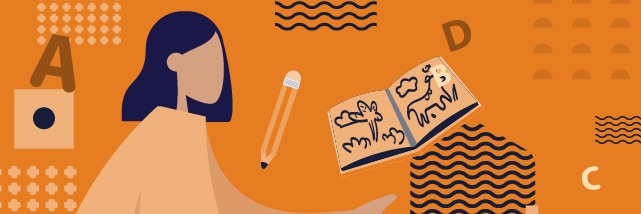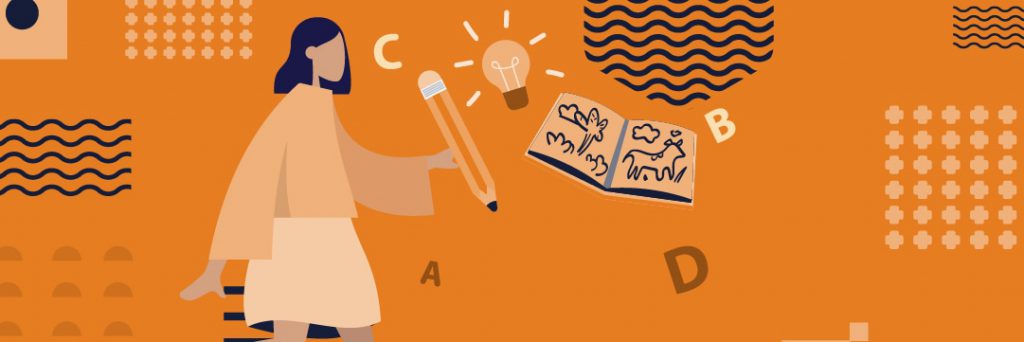What exactly is an illustration and why does it deserve its part among arts? Who then is more qualified to explain the meaning of illustration than New York’s Museum of Modern Art? According to their explanation, illustration is visual imagery that is best known for interpreting, depicting, explaining, and/or decorating the words in books, newspapers, and online media. In more current terms, illustrations are the drawings you find to make websites and apps more user-friendly (think emojis), the surface pattern on your paper coffee cup, the character on a cereal box, as well as the wallpaper in your favorite old home.
Yet, these are only some of the applications we have for illustration. As MyMet points out, the field of illustration shapes the world we live in. It is at once highly visible while being invisible, and it has an influence that transforms our visual culture to give people a voice and our lives more meaning.
On one hand, an illustration is a practical tool, it conveys information. On the other side, it is an art because it “can be beautiful and it can evoke emotion” (above).
Actually, the practice and art of illustration have been with us since the early days of human history. Remember the drawings on the walls of caves in the dawn of human existence?
Still, it took a while for illustration to become a more common part of our lives. This came about at the end of the 19th century when printed material became more diversified and when the circulation started to grow.
The use of illustration in our daily lives
MyMet also recaps in points our current use of illustration:
- An illustration can illuminate stories in books and magazines;
- We use illustration to give items a more colorful and original touch;
- Making package design relies on illustration;
- An illustration can make digital media more human;
- A certain social stand is often made with illustrations;
- Illustrations make a big part of advertisements;
- Concept art in films and television relies also on illustration.
So what part in creating good illustrations depends on professional illustrators? As Learn.org explains, unlike designers who develop logos and similar images, illustration designers are frequently expected to create lively, character-driven illustrations with personality and often a touch of humor.
To work as professional illustrators they need to have artistic ability, creativity, business skills, dexterity, customer service skills, and interpersonal skills. Illustrators use their skills to create images that represent specific concepts. According to Salary List, an illustrator’s average salary is $52,074, median salary is $51,615 with a salary range from $28,538 to $85,000.
Very often, illustration often seems interchangeable with graphic design and conceptual art. But while these can overlap, they are actually separate creative fields.
When compared to graphic design there is one distinct difference. As Design Hill explains, graphic design is more seen as commercial art. The illustration is viewed mostly as fine art. Graphic design is more about communicating with a target audience, while the illustration is concerned mostly with a creative interpretation. This is the reason that graphic design is also known as communication design.
On the other hand, conceptual art, compared to illustration has another function. When you want to create or conceptualize from the outside characters, costumes, scenes, environments, architectures, products, or machines that do not yet exist, you need a concept artist (Nuts Computer Graphics).
The types of illustration art styles
Expert site Design Your Way presents a list and description of illustration styles. The list includes the following:
- Literal illustrations – A literal illustration style depicts reality in a similar manner to non – fictional books. The picture depicts a credible scene, even while using fantasy or drama.
- Photorealism – Photorealism is one form of literal illustration. There, the artist uses a photograph as his source and creates a realistic replica in exquisite detail. In photorealism, the artwork is often mistaken for a photograph. Drawing, perspective, and color choice are crucial to this form of artwork. The artist often uses airbrushing, or hand-painting with acrylics or oils to achieve the final results.
- History or culture illustrations – Almost every culture uses this type of illustrations to depict certain historical/cultural scenes or circumstances. “This form of illustration can also be used even within an era of photography in order to depict mood or add a sense of drama. This form is also a part of the literal illustration.
- Hyperrealistic illustration – “This form of illustration tries to erase the line between art and reality and is seen to be an advancement on photorealism.” Sometimes extra features are added to a representation or an artist may work with monochrome pencils to create a social message. Still, the goal is to create an image that is as close to reality as possible.
- Conceptual illustrations – This is a separate group from literal illustrations. Conceptual illustrations are metaphorical, with thought or imagery taking the place of realism. Although this work might contain elements of reality, the goal is to convey mood, metaphor, and subjectivity. This form of illustration could be compared to fictional writing.
More on illustration styles
- Images in sequence belong in the conceptual illustrations category. Images in sequence tell a story and can be used for cartoons, graphic novels, and even to plan movie scenes. Styles may differ, from quick sketches to fine liner drawings with airbrushed detail. Depending on the message, an image may use crisp, clean color, or may use ink, jagged lines, in order to depict the messy business of politics.
- Information graphics – These are graphic representations of knowledge. They are often used to assist with understanding complex information. They show the audience what this is often represented in a way that contains additional insights (above).
- Abstract design illustrations – Sometimes also called distorted design. They are an expressive form of illustration, removed from reality, where representations emerge from imagination. As it is so subjective, two abstract artworks will look very different from one another.
- Freehand illustrations can be really done by hand or they can be digital. Currently, artists mostly use digital pads for their freehand drawings. An artist can use layers of imagery to create complex backgrounds and add fine detail. Many of these images use raster format, limiting the size they can be blown up to before losing quality.
- Vector graphics as illustrations – With vector graphics, mathematical equations are used to produce designs. As vector diagrams don’t use strokes in the way freehand digital drawing does, the images are not as smooth as freehand designs. They can, however, be blown up without losing quality. These images have clear shapes and outlines and are very popular for web illustrations.
- Children’s illustrations – Children’s illustrations tell a story or give a visual representation of a tale or even an imaginary being. The style of illustration depends on the age of the child. Some may be complex and realistic, while others may be naïve.

Graphic novels, books, and branding
- Illustrations for comic books and graphic novels – Comic books often involve characters in action. Styles are often complex and range from line drawings to airbrushed images. Cartooning is often one of the most frequently used styles in comics. Comic images often come in panels and often involve speech bubbles or narratives. The size of panels, as well as how often they feature helps to set the pace of the story.
- Book covers and publications – Illustrators are often used to design covers of books, in order to make them stand out in a bookshop. A cover often hints at what is inside the book and gives the idea of humor, seriousness, culture, or movement. Book illustrations range from cartoon-style drawings to historical or cultural images. Although the saying ‘never judge a book by its cover’ is often repeated, it is actually the cover that will sell a book, and will assist the book with appealing to the correct audience.
- Illustrations for logos or branding – Logos are a very specific style of illustration. Very often their goal is to give information about a product, using color, font, or imagery. Logos are often simple, but grab attention to a product, defining them as belonging to a particular brand. Often this brand is associated with imagined qualities, such as speed, power, or creativity, and the logo helps to conjure up this emotional message. Sometimes, businesses use more than simply a logo to assist with branding.
Current trends in illustration art
Of course, within certain styles in illustration arts there are always current, developing trends. These influence the work of all professional illustrators, whether they are permanent staff or freelancers.
One expert site has identified some of the most current trends in illustration art. Among others, these include:
- Line art – Currently, clean and sophisticated outline graphics and typography are quite popular. Based on that, there are “more line illustrations and artworks integrated into branding, web design and printed stuff.”
- Broken proportions – achieved the amazing diversity of styles, plots, exaggeration or ‘tinification,’ and visual metaphors. Such an approach is definitely effective in setting visual originality, wished so much by brands. “Still, to be done harmonically and beautifully, it requires real artistic talent from the illustrator: to break the rules, you need to know them perfectly!”
- Dynamic composition – We see more and more characters and graphic elements moving, running, flying, swimming, cycling, doing anything except standing still.
- 3D art and animation 3D art gives depth and realism where it’s needed, allows designers to step beyond the limits of two dimensions, and sets solid connections to the objects of the physical world.
- Gradient – A gradient is a graduated blend of two or more colors or tints of the same color. You can use gradients to create color blends, add volume to vector objects, and add a light and shadow effect to your artwork.
Design for Users also adds the following current threads to its list:
Visual noise effect, surrealism, primitivism vibes, flat lay art, geometric motifs, nature motifs, and negative space. This is just additional proof that even though illustration art is with us since early human history it is one that is still around us.











